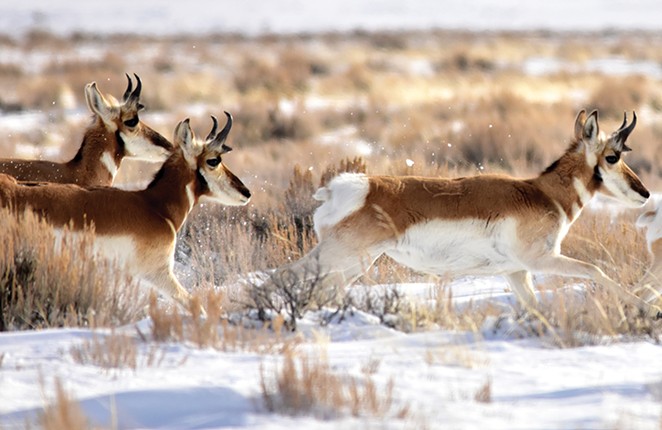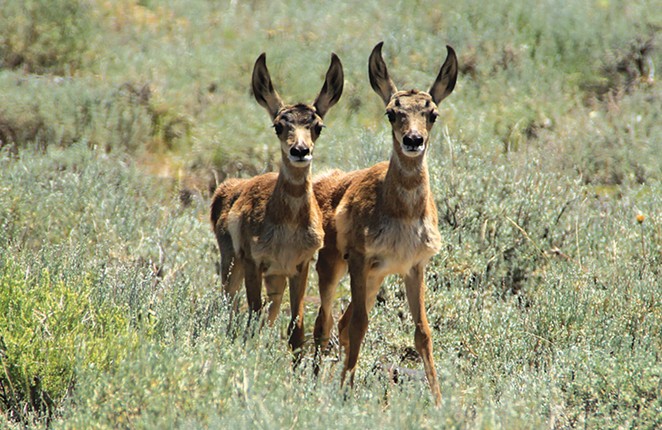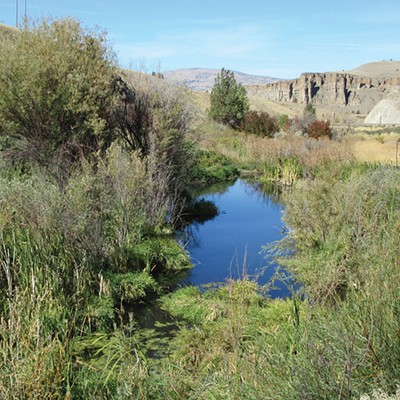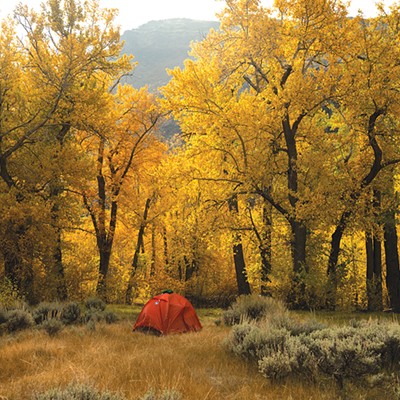Pronghorn (Antilocapra americana) may be the most recognizable of all wildlife in Oregon's vast sagebrush sea. Commonly — but mistakenly — also referred to as "antelope," this migratory species is an indicator of the health and resiliency of their sagebrush habitats. If pronghorn populations are faring well, then likely so is their ecosystem. Where pronghorn are suffering, we might have a problem.

"Prairie Ghost"
Poetically known as "Prairie Ghost," the pronghorn is both elusive and blazingly fast. Capable of bursts of up to 60 miles per hour, their anomalous speed is a relic from a bygone era when they needed to flee the worthiest of carnivorous adversaries: the extinct North American cheetah. Pronghorn are turbocharged to run! They've evolved an oversized heart and lungs to take in large gasps of oxygen, spring-like padded hooves to absorb rocky terrain and large eyes to see their predators from afar. While their speed is now unnecessary, greatly exceeding that of all modern-day predators, it's always captivating to watch pronghorn take off across the desert.
Drawn to open, expansive terrain, pronghorn are at home in Oregon's rolling hills of sagebrush steppe. In fact, they cannot live without it. Pronghorn are considered a sagebrush "obligate" species, meaning they depend on sagebrush to survive. Healthy sagebrush habitats are a broad mosaic of sagebrush shrubs, perennial bunchgrasses and wildflowers, laced with desert creeks, and punctuated by Western juniper and groves of Quaking aspen.
As idyllic as it seems, the sagebrush sea isn't without its extremes. The landscape is hot in summer and bone-chilling in winter, requiring unique adaptations of its inhabitants. To survive the excessive temperatures, pronghorn have evolved specialized hairs for heating and cooling. The species also migrates annually between winter and summer ranges – sometimes traveling more than 100 miles – to find available food sources.
Pronghorn in the Greater Hart-Sheldon
Despite its immense size, the sagebrush sea is considered one of the most imperiled ecosystems in North America. Scientists have identified just a handful of sagebrush "strongholds" across the West that provide the most important habitat for the long-term survival of pronghorn and hundreds of wildlife species that depend on the sagebrush steppe. The Greater Hart-Sheldon is one of them. Straddling the border between southeastern Oregon and northern Nevada, this region is home to thousands of pronghorn. In 2016, wildlife managers counted more than 8,000 pronghorn in the Greater Hart-Sheldon. However, populations have declined since the, with the most recent count at 4,313 animals in 2019. Perhaps this fluctuation in numbers is natural, or maybe there is something amiss with this habitat.
Conserving the fastest mammal in North America
The pronghorn's original range was larger than that of the American bison, and their population once numbered in the staggering tens of millions. Unfortunately, in the span of just a few generations, pronghorn populations crashed, heavily impacted by habitat degradation, over hunting and disease. By the early 1900s, there were estimated to be as few as 13,000 remaining in the United States. Concerns about their fate led to conservation efforts to protect the species and their habitat, including the establishment of two namesake national wildlife refuges in the Greater Hart-Sheldon: Hart Mountain National Antelope Refuge and Sheldon National Wildlife Refuge.
The U.S. Fish and Wildlife Service administers the refuges while the Bureau of Land Management is responsible for the expansive public lands that connect the two preserves. This combination of federal lands provides a unique and rare opportunity to protect and conserve climate-resilient core habitats and connectivity at a landscape-scale for pronghorn and hundreds of other species.
Oregon Natural Desert Association has been working for more than three decades to protect, defend and restore sagebrush habitats like the Greater Hart-Sheldon. ONDA and our community have rolled up and removed more than 300 miles of barbed wire fencing from the region. More recently we have partnered with Lakeview Bureau of Land Management to inventory and retrofit remaining fencing to render them safer for pronghorn to pass under. We are also pleased to engage in a number of federal and state planning processes to provide new protections in the region for pronghorn and a multitude of other species contending with shrinking habitats and climate change. Preserving these landscapes is essential if we want to continue enjoying the wonder of this species in the future.
—Renee Schiavone is the Communications Manager at Oregon Natural Desert Association, a nonprofit that protects and restores Oregon's high desert public lands and waters. Read more of her work at onda.org/author/rschiavone.























